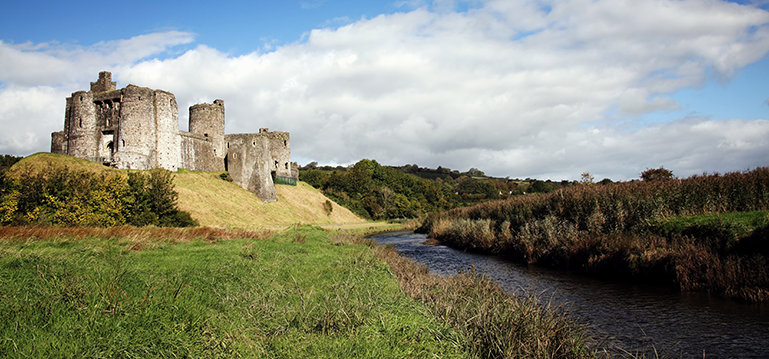Fostering pupils’ pride in the Welsh language and deepening their knowledge of local history and national traditions while developing the Curriculum for Wales

Quick links:
Information about the school
Ysgol Gymraeg Gwenllian is a Welsh-medium school for pupils aged 3-11 and is maintained by Carmarthenshire local authority. A minority of pupils come from Welsh speaking homes. There are 137 pupils on roll and 11.3% of the school’s pupils are eligible for free school meals.
Context and background to the effective or innovative practice
Ysgol Gymraeg Gwenllian is situated in the historic town of Kidwelly, where a number of historic attractions and stories allow rich opportunities to develop pupils’ interest and curiosity. However, leaders realised that pupils’ understanding of the area’s valuable history was not developed enough. In order for the school to have a positive effect on pupils’ understanding of this and, ultimately, to understand Kidwelly’s place in Wales and the wider world, leaders decided to develop a robust vision based on the history of Princess Gwenllian. The journey began by encouraging teachers to teach about the area, developing values based on the princess and developing a motto for the school.
Description of the nature of the strategy or activity
New values were created for the school jointly between pupils, governors and staff, which place an increasing emphasis on the four purposes and the history of Princess Gwenllian. A strong emphasis was also placed on celebrating Welshness and nurturing pupils’ understanding of Kidwelly’s rich history, for example the black cat, the River Gwendraeth, the Little Old Lady of Kidwelly (‘Hen Fenyw Fach Cydweli’) and, of course, the castle. Priority was also placed on making use of the local area for learning activities, for example by holding shows at the castle rather than at school.
Because of the emphasis on the area, pupils re-wrote the story of Princess Gwenllian by weaving history into the school’s values and sharing this through a film for the community. Podcasts were also created about the area with local residents and famous former pupils. History boards were created for a range of ages which included games for younger children, such as find the black cat, and numeracy challenges such as calculation cards for older children. The podcasts, video and history boards succeeded in creating natural links between pupils’ experiences and their learning. This also created opportunities for pupils to embed their understanding further and develop their creating writing and design skills, by creating poems about parts of the area on Celtic knots to be displayed in the area while working with a chief bard. This accompanied a map of the area designed by pupils for visitors to the school and the area. In turn, this succeeded in deepening pupils’ knowledge of the local area.
The school’s leaders also ensured that the community, parents and local businesses had a say in the design of the school’s curriculum by sharing questionnaires that focused on pupils’ direction of learning and their skills for the future. The voice of the community, the school’s values and the Welsh ethos were a key part in preparing staff to plan the Curriculum for Wales. Also, in order to deepen pupils’ understanding of Welsh activities further, activities were planned to promote Welshness, including eisteddfodau, Welsh beatboxing activities, concerts and links with national organisations, such as the Football Association of Wales.
Through this, a firm foundation was ensured to deepen pupils’ understanding of the area’s history and the importance of Welshness, for example by developing their understanding of global issues by forging strong links with a school in Qhobosheaneng, Lesotho and a school in Saint-Jacut-de-la-Mer, France.
What impact has this work had on provision and learners’ standards?
The school takes pride in the fact that its recent inspection noted that its ‘robust vision, which is based on the history of Princess Gwenllian, has been crafted skilfully to foster pupils’ pride in belonging to the local area and Wales. This, in turn, supports pupils to broaden their horizons and apply their skills in a rich range of learning experiences’.
The dedication of staff and pupils in the community has also had a positive effect on teaching and learning, as it provides opportunities to develop an understanding of their own history and local area. As a result, learners have an innate pride towards their ‘cynefin’, their local area and their heritage. They are valuable members of their community and the community is an integral part of the school.
How have you shared your good practice?
The school places an emphasis on celebrating the successes of the pupils and the school as a whole on its website, social media and the local and national press. Good practice is also shared widely through county events and national and international recognition, as the school has won a number of awards. It also plans its vision and curriculum to focus on famous people from the area who emphasise the importance of their culture, heritage and Welshness. For example, pupils created a video to explain the school’s vision, based on Princess Gwenllian. A number of comic boards, Celtic knot boards and a large map were also created on the school grounds, which promote the area’s history successfully.